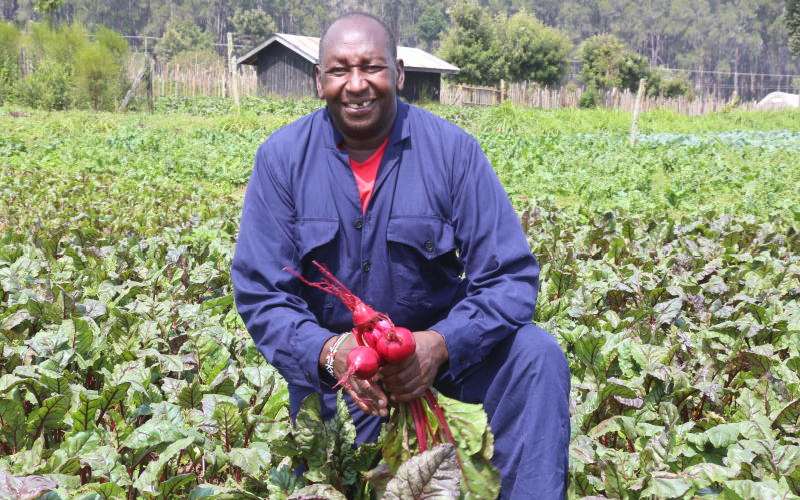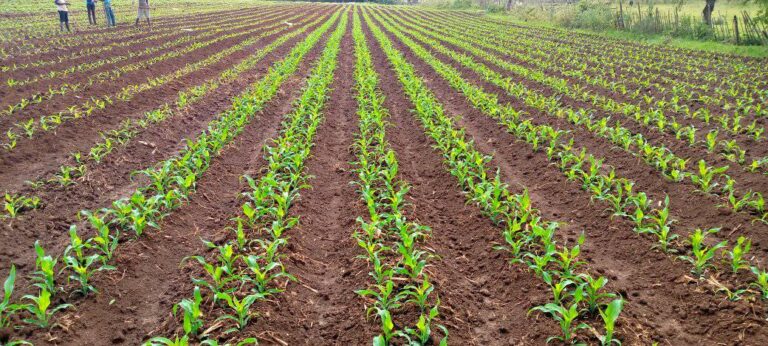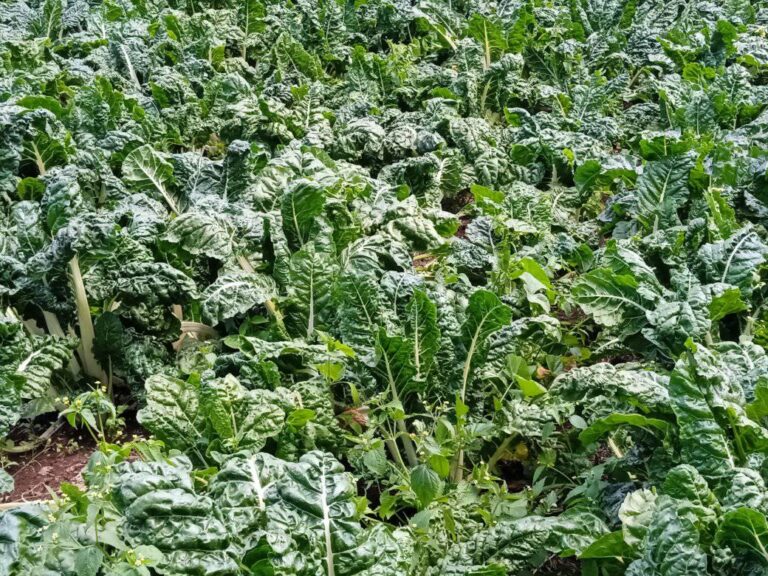Beetroot Farming Yield & Profit Per Acre In Kenya
In Kenya, beetroot farming can yield about 10-15 tons per acre. Market prices for beetroot range from KSh 30 to KSh 60 per kg, translating to potential revenue of KSh 300,000 to KSh 900,000 per acre. After accounting for costs such as seeds, fertilizers, labor, and pest control, net profits typically range from KSh 200,000 to KSh 750,000 per acre.
Beetroot Farming In Kenya
Beetroot farming involves growing the beet plant primarily for its edible root, though the leaves are also nutritious and can be consumed. In Kenya, the significance of beetroot farming is growing, thanks to its health benefits and increasing market demand both locally and internationally.
Why Beetroot?
Nutritional Benefits
Beetroots are packed with essential vitamins and minerals that contribute to overall health. They are rich in Vitamin C, which boosts the immune system, and folate, which is crucial for DNA synthesis and repair. Beetroots also contain manganese, which supports bone health, and potassium, which helps regulate blood pressure. Additionally, they are a good source of dietary fiber, promoting digestive health.

Market Demand
The demand for beetroots in Kenya is on the rise due to increased awareness of their health benefits. Locally, beetroots are used in various culinary dishes and beverages, while internationally, there is a growing market for organic and fresh produce. This surge in demand presents a lucrative opportunity for Kenyan farmers to tap into both local and export markets.
Starting Beetroot Farming
Climate Requirements
Beetroots thrive in cool to moderate climates with temperatures ranging between 15°C to 25°C. They can tolerate light frost but are susceptible to bolting (premature flowering) in extreme heat. Adequate sunlight is essential for optimal growth, so choose a location that receives at least 6 hours of sunlight daily.
Soil Preparation
Beetroots prefer well-drained, loamy soil with a pH range of 6.0 to 7.5. Before planting, conduct a soil test to determine its nutrient composition and pH level. To prepare the soil, till it to a depth of about 12-15 inches and incorporate organic matter such as compost or well-rotted manure. This improves soil fertility and structure, promoting healthy root development.
Seed Selection
Select high-yield beetroot varieties that are well-suited to the local climate and soil conditions. Popular varieties in Kenya include ‘Detroit Dark Red,’ ‘Crosby Egyptian,’ and ‘Chioggia.’ Ensure you purchase seeds from reputable suppliers to guarantee quality and disease resistance.
Planting Process
Sowing Seeds
Sow beetroot seeds directly into the prepared soil. Space the seeds about 2-3 inches apart in rows that are 12-18 inches apart. Plant the seeds at a depth of ½ inch. Thin the seedlings to 4-6 inches apart to allow ample room for root development.
Watering Practices
Beetroots require consistent moisture for uniform growth. Water the plants regularly, ensuring the soil remains evenly moist but not waterlogged. During dry spells, increase the watering frequency to prevent the soil from drying out completely. Mulching around the plants can help retain soil moisture and reduce weed growth.
Fertilization Techniques
For optimal growth, apply a balanced fertilizer before planting and side-dress with additional nutrients as the plants grow. Organic options like compost and well-rotted manure are beneficial, but you can also use inorganic fertilizers with a balanced N-P-K ratio (e.g., 10-10-10). Avoid over-fertilizing with nitrogen, as it can lead to excessive leafy growth at the expense of root development.
Maintenance & Care
Weed Control
Weeds compete with beetroots for nutrients, water, and sunlight, so it’s crucial to keep them under control. Regularly hoe the soil surface to uproot weeds and apply mulch to suppress their growth. Be cautious not to damage the beetroot plants while weeding.
Pest Management
Common pests that affect beetroots in Kenya include aphids, leaf miners, and cutworms. To manage these pests, practice crop rotation and use natural predators like ladybugs to control aphid populations. Neem oil and insecticidal soaps can also be effective. For cutworms, consider using protective collars around the seedlings.
Disease Prevention
Beetroots are susceptible to diseases such as downy mildew, leaf spot, and root rot. To prevent these diseases, ensure proper spacing for air circulation, avoid overhead watering, and practice crop rotation. Remove and destroy infected plants to prevent the spread of disease.
Harvesting
When to Harvest
Beetroots are ready for harvest when they reach a diameter of 1.5 to 3 inches, typically 50-70 days after planting. The leaves should be healthy and green, and the roots should be firm. Gently pull one or two beetroots to check their size before harvesting the entire crop.
Harvesting Methods
To harvest beetroots, loosen the soil around the roots with a garden fork and gently pull the plants from the ground. Avoid damaging the roots during harvesting, as this can lead to decay and reduced shelf life. Trim the leaves to about 1 inch above the root to prevent moisture loss.
Yield Per Acre
The average yield of beetroot per acre in Kenya varies based on the variety and farming practices. On average, farmers can expect to harvest between 10 to 15 tons per acre. High-yield varieties and optimal farming techniques can increase this yield significantly.
Initial Investment Costs
Starting beetroot farming involves several initial costs, including:
- Land preparation costs: Tilling, leveling, and adding organic matter.
- Cost of seeds/seedlings: High-quality seeds from reputable suppliers.
- Fertilizers & pesticides expenses: Organic or inorganic options for optimal growth.
Operational Costs
- Labor cost: Planting, weeding, and harvesting labor expenses.
- Irrigation costs: Costs associated with watering the crops, including water and equipment.
Revenue Estimates
The market price for beetroots in Kenya ranges from Ksh 40 to Ksh 60 per kilogram. Based on an average yield of 10 tons per acre, the potential revenue per acre can be estimated as follows:
Potential Revenue = Average Yield (kg) x Market Price (Ksh/kg)
For instance, at a market price of Ksh 50 per kilogram, the potential revenue per acre would be:
Potential Revenue = 10,000 kg x Ksh 50/kg = Ksh 500,000
Profit Calculation
To calculate the profit, subtract the total costs from the gross revenue:
Profit = Gross Revenue – Total Costs
For example, if the total costs (initial investment + operational costs) amount to Ksh 200,000, the profit would be:
Profit = Ksh 500,000 – Ksh 200,000 = Ksh 300,000 per acre
Where to Sell
There are several avenues to market your beetroot produce:
- Local markets: Engage with local vendors and farmers’ markets.
- Supermarkets: Supply to supermarkets that stock fresh produce.
- Export opportunities: Explore international markets for organic and fresh beetroots.
Tips
- Building relationships with buyers: Establish good relationships with your buyers to ensure repeat business and better prices.
- Branding your produce: Create a brand for your farm and produce to stand out in the market. Packaging and quality consistency can significantly influence buyer preferences.




